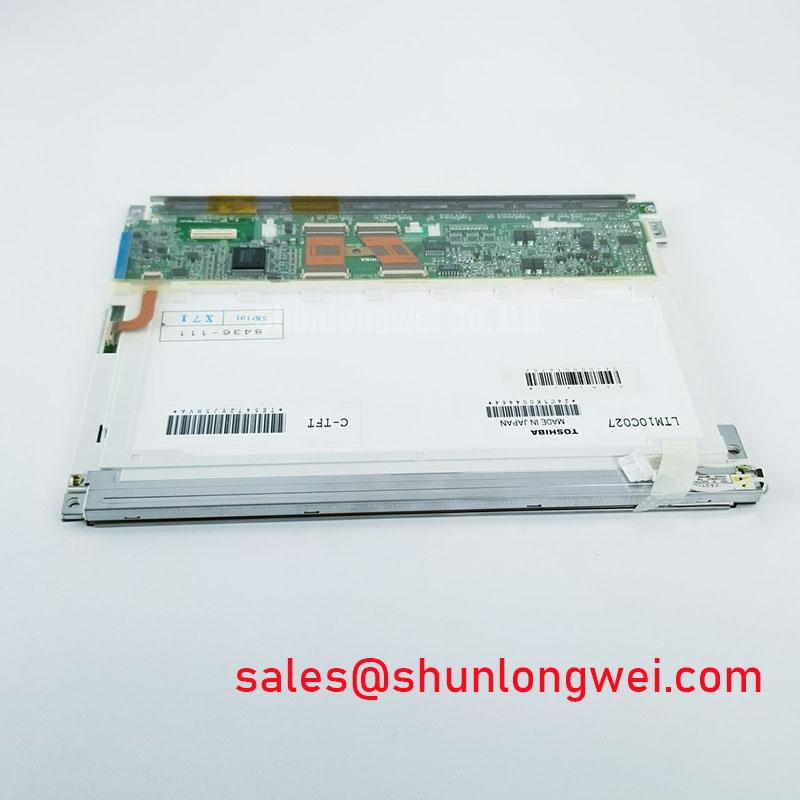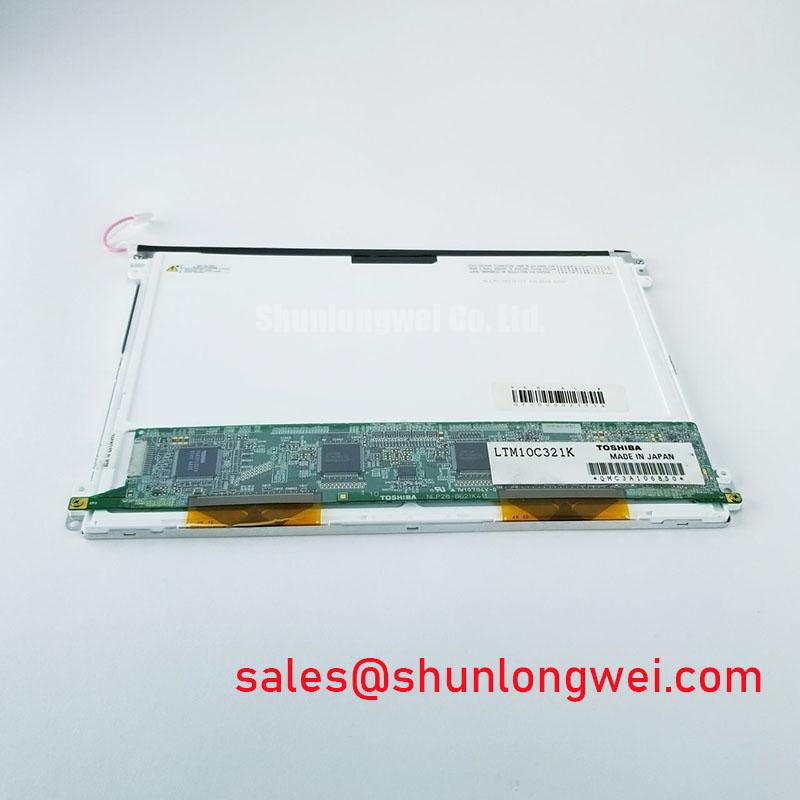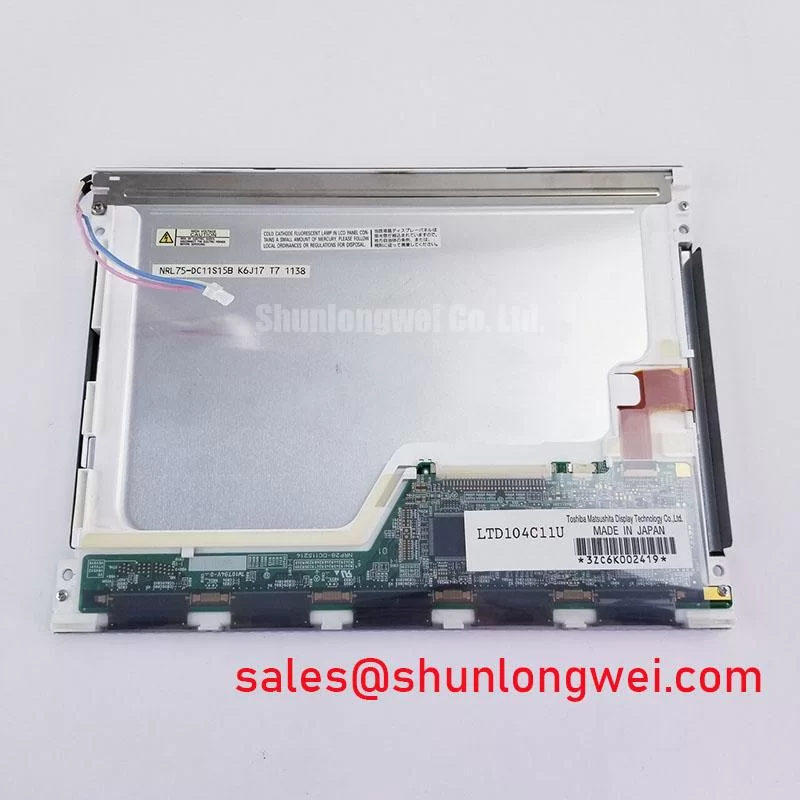Content last revised on November 14, 2025
LTM10C027 | 10.4" SVGA LCD for Industrial Environments
Engineered for Operational Integrity in Demanding Applications
The Toshiba LTM10C027 is a 10.4-inch SVGA TFT LCD module built for operational integrity in thermally and mechanically challenging industrial settings. It delivers consistent visual performance where standard displays may falter. Key specifications include a 10.4” SVGA (800x600) display, a wide operating temperature range of -10°C to +70°C, and an anti-glare surface treatment. This construction provides two primary engineering benefits: sustained resilience against vibration and enhanced readability in variable lighting. For designers questioning how to ensure reliability in non-climate-controlled deployments, the LTM10C027's documented tolerance for temperature extremes and mechanical stress provides a data-backed foundation for system integration.
Proven Field Deployment in Demanding Sectors
The design principles of the LTM10C027 lend themselves to applications where long-term dependability is a primary system requirement. Its robust construction has been validated in numerous legacy and ongoing industrial deployments. Typical integration scenarios include:
- Legacy CNC Machine Controls: Serving as a durable replacement or original HMI in machine tools where vibration and temperature fluctuations are common.
- Logistics and Vehicle Terminals: Deployed in warehousing or in-cab systems that experience consistent mechanical shock and a broad range of ambient temperatures.
- Process Control Panels: Integrated into factory floor interfaces for monitoring and control, where visual clarity and operational uptime are crucial for productivity.
Engineering for Durability: A Closer Look
The resilience of the LTM10C027 is not an accident but a result of specific design choices. The module's ability to operate from -10°C to +70°C allows for its use in sealed enclosures or environments without active cooling or heating, simplifying overall system design. What defines its industrial suitability? Its wide operating temperature and documented vibration resistance.
Furthermore, the anti-glare surface treatment is critical for maintaining operator efficiency. This surface acts like a noise-canceling filter for light, diffusing harsh ambient reflections that could otherwise obscure critical data. By preventing specular highlights and softening the impact of overhead lighting, it ensures that the information on the screen remains legible, reducing the potential for operator error. For a deeper understanding of the underlying technology, resources like The Ultimate Guide to TFT LCD offer valuable context.
Data-Informed Selection for Your Application
When evaluating displays, comparing specifications against the target environment is essential. The LTM10C027 is positioned as an industrial-grade component, a distinction clarified by key data points when compared to a typical commercial-grade display.
| Parameter | Toshiba LTM10C027 | Typical Commercial-Grade Display |
|---|---|---|
| Operating Temperature Range | -10°C to +70°C | 0°C to +50°C |
| Vibration Resistance (Operational) | Specified at 1.0G (9.8 m/s²) | Typically not specified or lower |
| Surface Treatment | Anti-Glare | Often Glossy or basic anti-reflection |
| Backlight Lifetime (Typ.) | 50,000 hours | 20,000 - 30,000 hours |
This data supports decision-making for projects where environmental conditions exceed the limits of standard consumer or office equipment. The distinction in total cost of ownership becomes apparent when considering the longevity and resilience of industrial components. For more on this topic, see the analysis of industrial vs. consumer displays.
Technical FAQ for the LTM10C027
1. What is the specified operating temperature and vibration resistance of the LTM10C027?
The LTM10C027 is specified to operate reliably in ambient temperatures ranging from -10°C to +70°C. Its mechanical design is rated to withstand a vibration of 1.0G (9.8 m/s²), making it suitable for integration into mobile or machinery applications.
2. How does the anti-glare surface benefit an industrial HMI application?
The anti-glare (AG) surface diffuses incident light, significantly reducing specular reflections from overhead lighting or indirect sunlight. This ensures the screen remains clear and readable from various angles, which is critical for reducing operator fatigue and preventing misinterpretation of data on a factory floor or in a vehicle cabin.
3. Is the CCFL backlight on the LTM10C027 user-replaceable?
The datasheet specifies a long typical lamp lifetime of 50,000 hours to half-brightness. While the backlight is a discrete component, its replacement typically requires disassembly of the display module. For service and maintenance planning, it is recommended to consult the original equipment's service documentation and consider the specified backlight lifespan as part of the system's overall maintenance schedule.
Lifecycle Value in Industrial Systems
Selecting a component like the LTM10C027 is a strategic decision that impacts the total cost of ownership (TCO). While initial procurement costs are a factor, the primary value for industrial OEMs lies in reduced field service, higher equipment uptime, and consistent performance across a wide range of deployment scenarios. The use of amorphous silicon (a-Si TFT) technology provides a mature and well-understood platform for reliability. By integrating a display module designed with environmental resilience as a core attribute, engineers can enhance the market reputation of the final product and minimize long-term warranty and support costs.
Optimized for Challenging Operational Theaters
The technical specifications of the LTM10C027 align it with specific industrial and commercial applications where durability is paramount. How does the display enhance visibility? Through an anti-glare surface treatment that minimizes reflections. This makes it a strong candidate for:
- Industrial Automation HMI: Providing clear, reliable visual feedback on machinery and process control lines.
- Test and Measurement Equipment: Offering a stable display for portable or benchtop diagnostic tools used in field or lab environments.
- Transportation and Avionics: Serving as a display in dashboards, control yokes, or information panels where vibration and temperature are constant operational factors.
For legacy systems requiring a mechanically resilient 800x600 display with a proven -10 to +70°C operational range, the LTM10C027 is a specification-matched solution. For systems requiring a different form factor or resolution, the G084SN05 V9 offers a compact 8.4-inch alternative.
LTM10C027 Technical Specifications
The following are key performance indicators derived from the official product datasheet. For complete details, please refer to the official documentation.
| Key Performance Specifications for LTM10C027 | |
|---|---|
| Display Mode | Transmissive, Normally White |
| Screen Diagonal | 10.4 inch (26 cm) |
| Resolution | 800 (RGB) × 600 [SVGA] |
| Luminance (Typical) | 200 cd/m² |
| Operating Temperature Range | -10 ~ 70 °C |
| Signal Interface | RGB Parallel (6-bit), 20 pins |
A Strategic Component for Long-Term System Value
Ultimately, the integration of the Toshiba LTM10C027 into an industrial system is an investment in stability. Its design prioritizes resilience over cutting-edge display metrics, ensuring that it functions as a reliable visual interface for the intended lifespan of the host equipment. For engineering teams developing systems for challenging environments, this focus on mechanical and thermal robustness provides a crucial element of design confidence and contributes to a product's reputation for enduring quality.
















